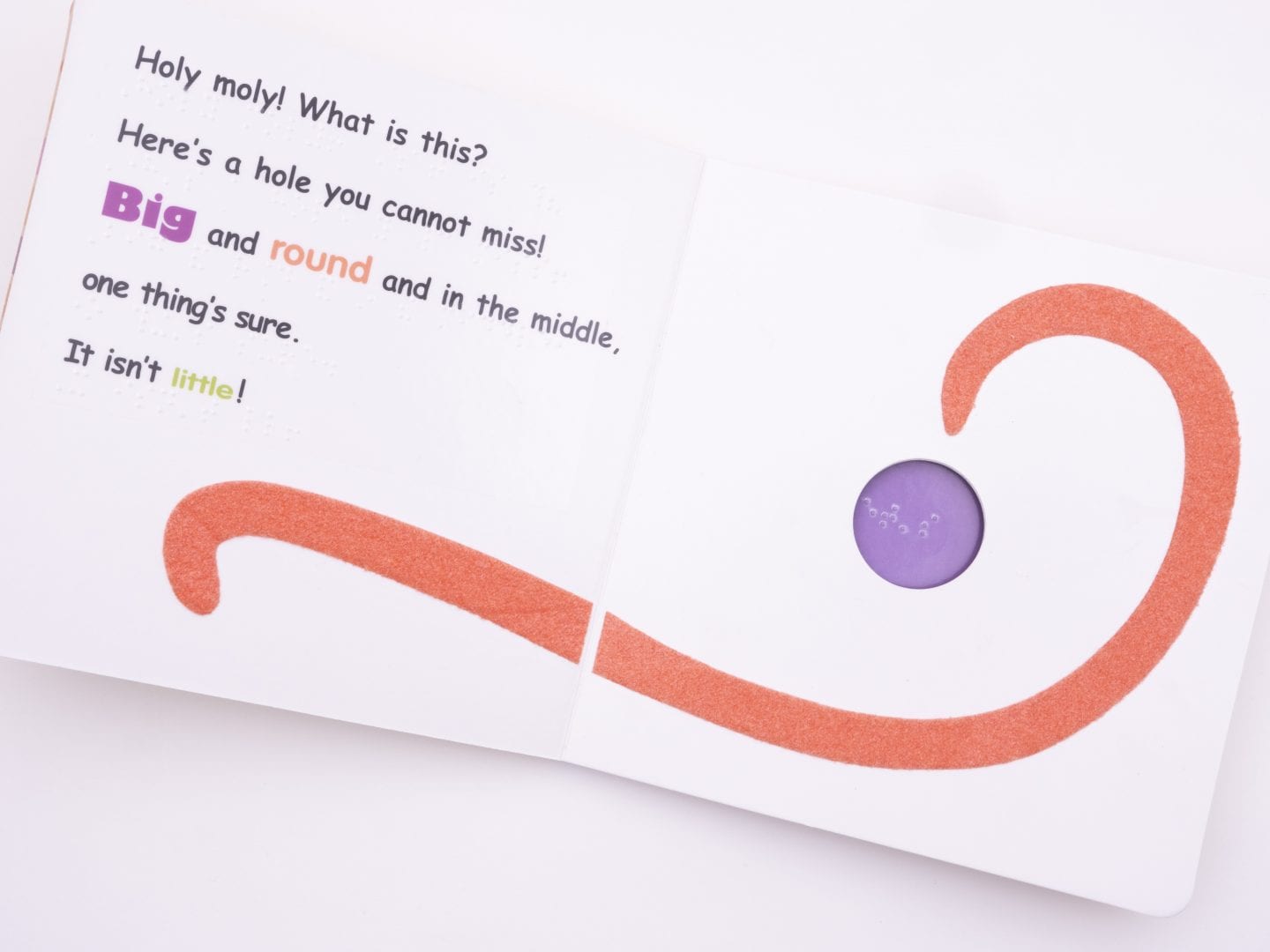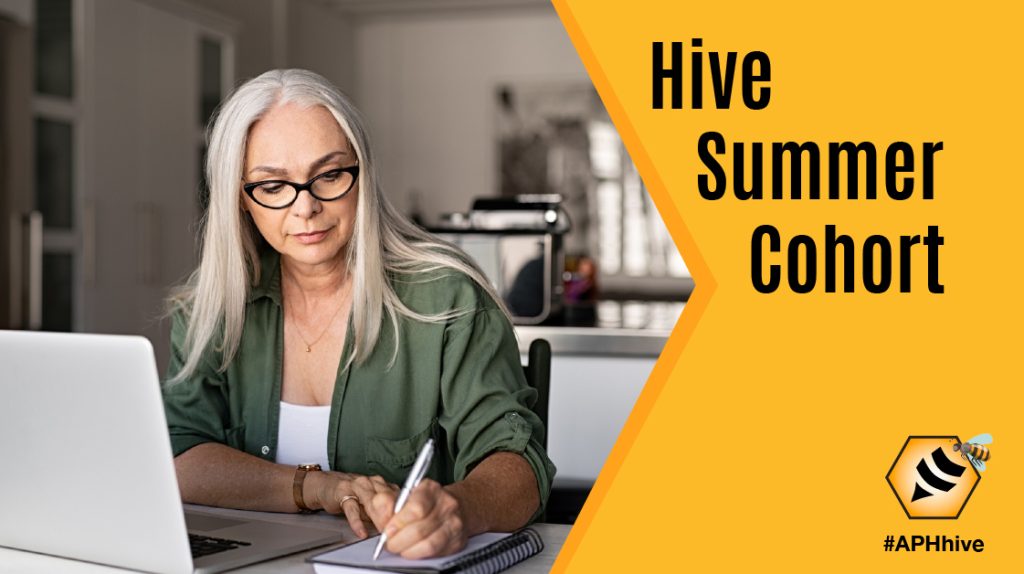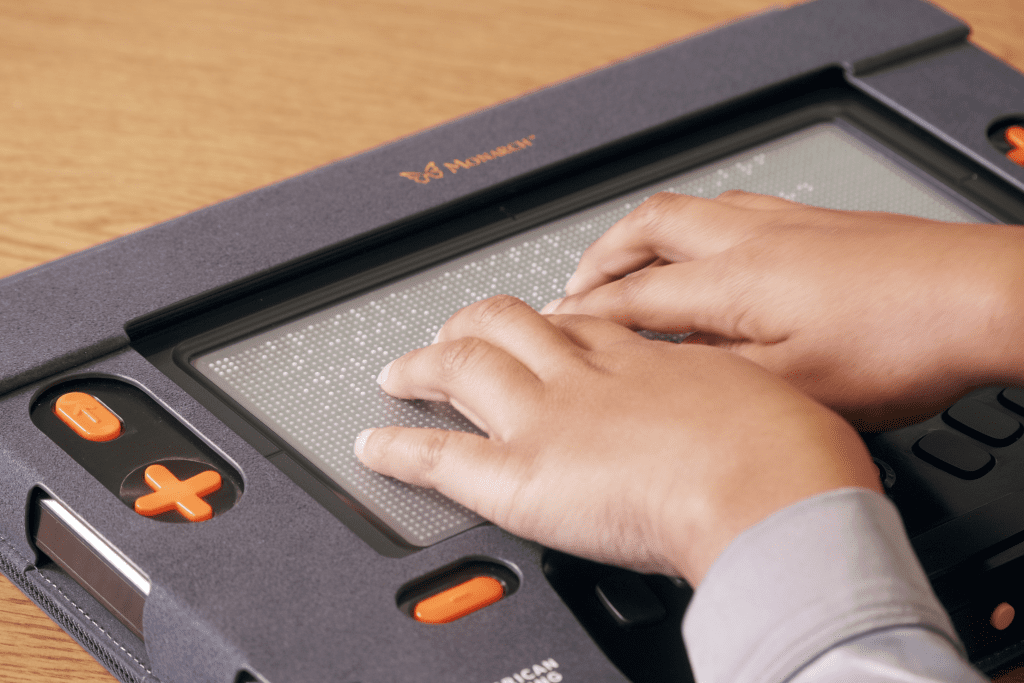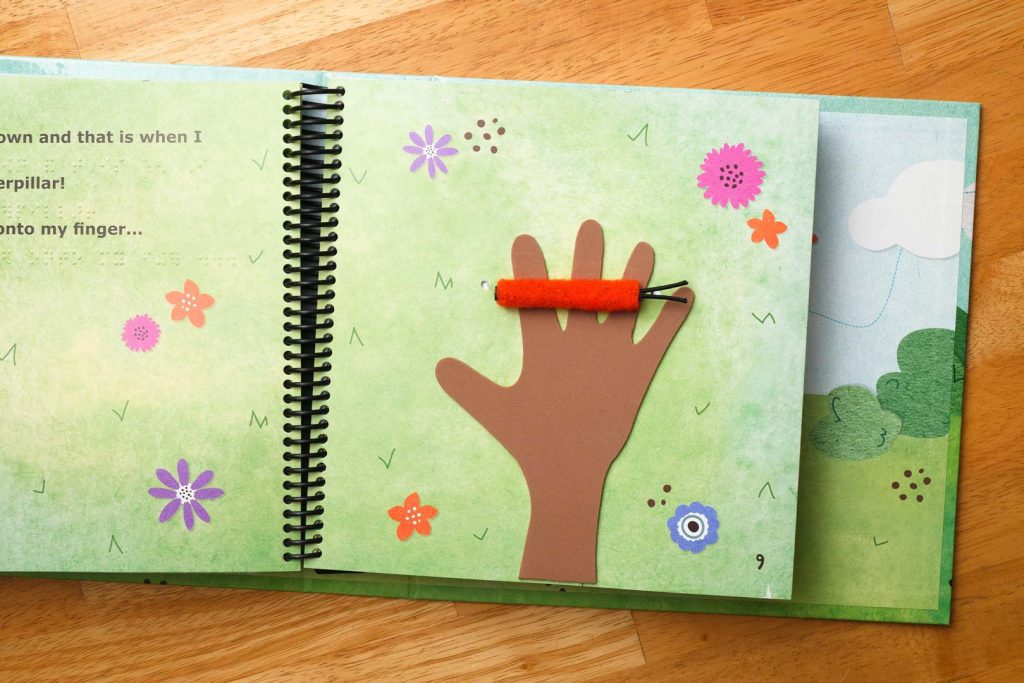An Rx for Literacy: Tactile Books from APH

Far from being a well-kept secret, reading aloud has long been considered key to helping young children become readers and writers. Since 2005, the American Academy of Pediatrics has directed pediatricians to prescribe reading aloud as they advise parents at well-child visits.
Research supports their Rx. When an adult reader and child interact during read-alouds, sharing books that interest the child, the activity is associated with improved oral language and knowledge about:
- conventions of written language (Wells, 1986)
- phonological awareness (Burgess, 2002)
- comprehension strategies (Teale, 1981; Gold, 2001)
- vocabulary (Elley, 1989)
All are considered important foundations for literacy (National Reading Panel, 2000; National Early Literacy Panel, 2008) for both print and braille learners.
But more persuasive than the words of professionals are those of parents and children, who tell us that sharing the magic of a good book can be downright fun! Reading aloud, when the book is a good fit for the child’s abilities and interests, has the power to spark and fuel a love of reading.
What is less well-known is the type of books most likely to be a “good fit” for a young child unable to access print and print illustrations. Text can be provided in both braille and print; however, print illustrations play a central role in early books, adding interest and providing a way for children to take an active role during read-alouds — commenting, pointing, and asking questions about pictured events and objects.
An often-used approach is to create “tactile books”—placing things on the page, related to the words of the story, that can be touched: objects, textures, collaged shapes, interactive components, simple raised-line drawings, and multisensory items like scents and sounds.
A well-designed tactile picture can be a two-way street: the meaning of the story leads the child in understanding the tactile picture, and the tactile picture adds meaning and interest to the story (Stratton & Wright, 1991).
To be effective, however, “tactile pictures” must trigger a connection to the child’s own experience of real objects and events. Although books from commercial print publishers sometimes include texture swatches, pop-ups, and sounds, these are designed for a sighted child who can view the surrounding visual picture. Compared with tactile books designed for a tactual learner, their ability to be understood may be limited and can lead to reduced interest (Palmer, 2005).
Tactile books from APH are designed for and evaluated with children with visual impairment. Those for the youngest learners represent and preserve the most significant tactile features of familiar “real-life” objects. In collage-style tactile pictures, diverse textures give identity clues and act much as color does in a print picture, setting apart elements of the picture. Tactile books for older learners introduce extremely simple raised outlines and some have symbolic displays similar to tactile graphics encountered later in textbooks.
More than just a handy tool in your literacy toolbox, reading aloud from tactile books can be an important Rx leading to successful literacy outcomes. And the Rx is not “take one at bedtime.”
Read as often as you are able and the child enjoys!
Begin your child’s literacy journey with this list of tactile books from APH or build your own book with the Tactile Book Builder Kit and related print guide.
0 to 3 Years
- Holy Moly
- Laptime and Lullabies: Storybooks (2 titles) and Parent Booklets
2 ½ to 5 Years
- On the Way to Literacy Series (13 titles) and Parent/Teacher Handbook (Print and Braille)
- LDQR Series
- Rolling Into Place
- Alphabet Scramble
- Best for a Nest
4 to 7 Years
- Moving Ahead Series (4 titles)
To find related products, visit aph.org/shop.
Share this article.
Related articles

The APH Hive Launches Summer Learning Cohort
Are you ready to dive into the fascinating world of literacy education for students with visual impairments? APH is thrilled...

The Monarch: Improving Braille Literacy for Students
Braille helps students who are blind or low vision with reading, writing, and comprehension so they can succeed in school...

Go on an Adventure with The Caterpillar
Are you curious about the outside world? Explore your very own backyard with the help of a fuzzy, orange caterpillar...
